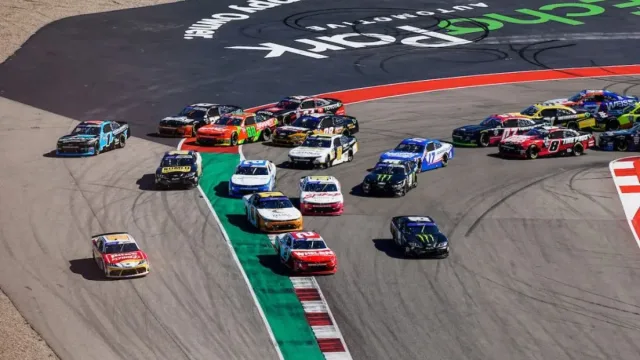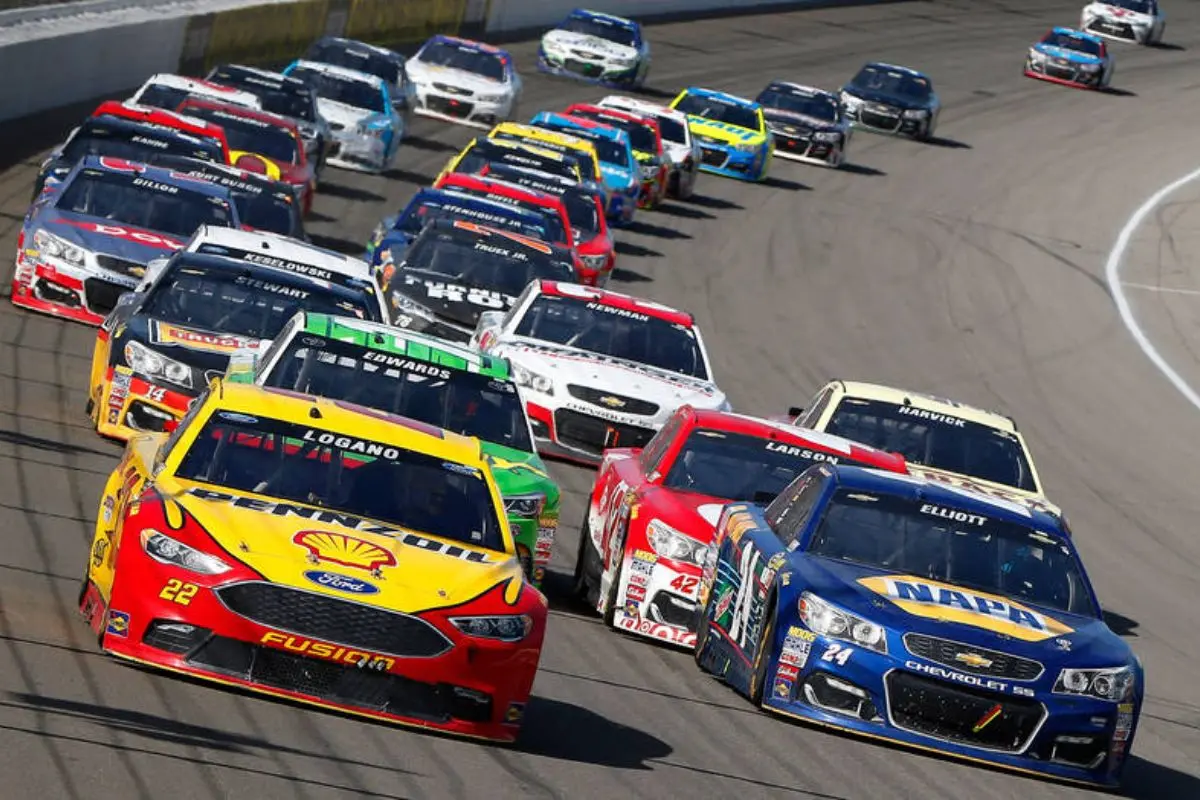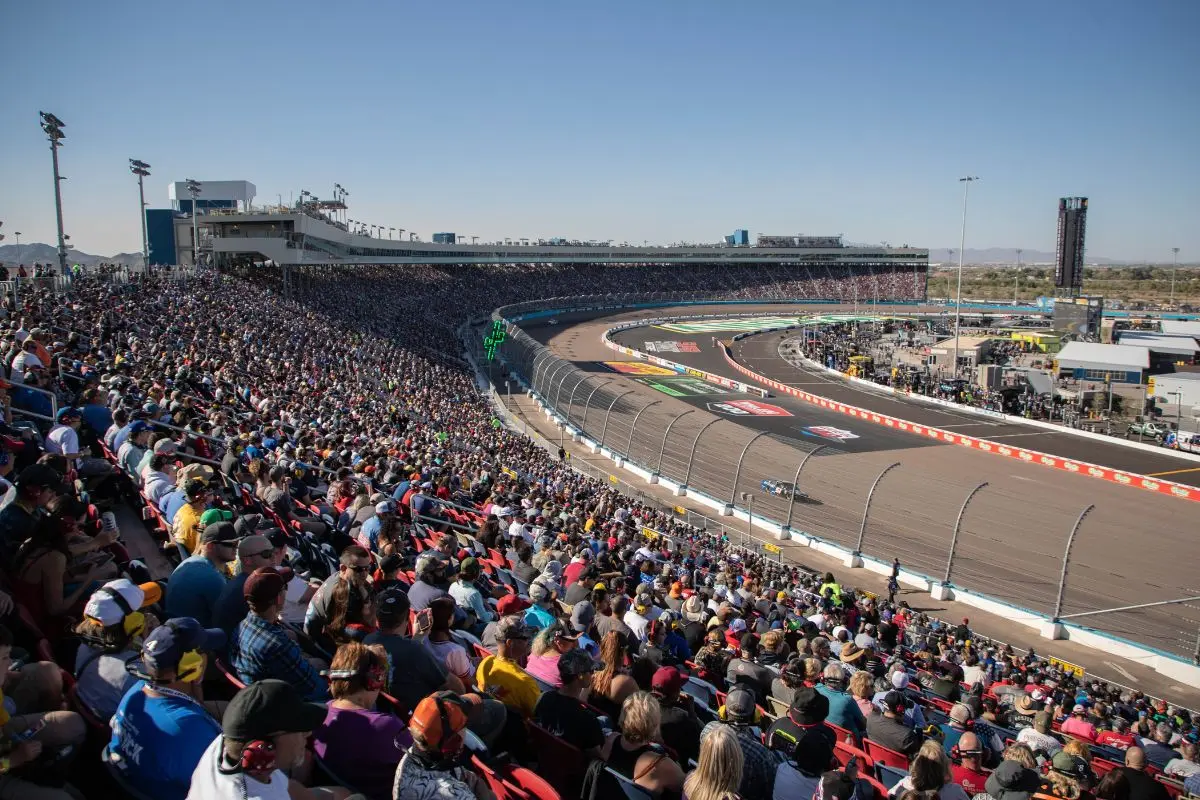NASCAR’s 4 Million Dollar problem is ruining the careers of young drivers, and it’s leaving many talented racers stuck on the sidelines. With sponsorship money playing a bigger role than talent, drivers like Chandler Smith and Ryan Truex are struggling to find a way into the sport’s elite ranks. Why is financial backing now the biggest obstacle to success in NASCAR? This article explores how money is taking over the sport, and how it’s affecting the careers of the next generation of NASCAR stars.
Key Highlights
- Financial backing is prioritized over driving talent, leading to talented drivers being overlooked in favor of those with lucrative sponsorships.
- Independent contractors face significant financial burdens, making it difficult for emerging talents to compete in NASCAR.
- Marketability and social media presence have become crucial for driver selection, overshadowing actual racing performance.
- The focus on entertainment value risks diluting the sport’s integrity, potentially alienating fans who value competition.
- Systemic financial inequities threaten the sustainability of NASCAR and limit opportunities for deserving drivers to ascend the ranks.
The Financial Struggles in NASCAR
The financial landscape of NASCAR resembles a poker game, where only a select few seem to hold winning hands. Established in 1948 by the France family, the sport has long been rooted in privilege, creating an environment that favors those with deep pockets. Independent contractors have traditionally shouldered the financial burden of placing cars on the racetrack, and as we enter the 21st century, this dynamic remains unchanged.
The persistence of such an economic structure raises critical questions about the sustainability of the sport and its ability to nurture emerging talent. The Race Team Alliance’s recent calls for reform highlight the urgency of addressing these financial inequities. Even powerhouse teams like Hendrick Motorsports have admitted to not turning a profit for years, revealing a troubling paradox within the sport.
While the image of NASCAR is one of excitement and competition, the reality is that financial struggles permeate all levels, constraining the potential for broader participation and innovation. With sponsorship deals and funding increasingly concentrated among a few elite teams, financial barriers become insurmountable for independent racers and smaller teams.
This not only stifles competition but also sidelines talented drivers who lack the necessary resources to compete effectively. As the economic challenges mount, the risk of alienating fans and diminishing the sport’s appeal grows, leaving NASCAR at a critical crossroads where the need for equitable financial reform is more urgent than ever.
The Struggles of Talented Drivers in NASCAR
While the spotlight often shines on standout performances like Connor Zilisch’s stunning debut victory at Watkins Glen, a deeper examination reveals a troubling trend: numerous comparable talented drivers remain on the periphery, struggling to secure a foothold in NASCAR. This phenomenon raises critical questions about the selection process in a sport that prides itself on skill and competition.
The reality is glaring; while young talents like Zilisch burst onto the scene, many competitors with equal potential are left waiting in the wings. These drivers often demonstrate exceptional ability in lower-tier series, yet the shift to NASCAR’s elite ranks remains elusive. Insiders lament that despite their impressive track records, these drivers frequently lack the financial backing that seems to overshadow raw talent.
The struggles of these gifted individuals highlight a systemic issue within the sport. Talent alone is insufficient in an environment where sponsorship and funding dictate opportunities. The inconsistency of support for promising drivers creates a disheartening landscape, where only a select few ascend to the upper echelons of NASCAR.
Moreover, the emphasis on marketability and sponsorship dollars often leads to a preference for drivers with financial clout over those with undeniable skills. As a result, the sport risks alienating its core values of competition and meritocracy.
Money vs. Talent in NASCAR
Steering through the competitive landscape of NASCAR reveals a clear dichotomy between financial resources and driving talent, a reality that increasingly shapes the sport’s future. The recent path of rising stars such as Chandler Smith and Ryan Truex exemplifies this troubling trend. Despite impressive performances, including Smith’s two wins and multiple top finishes in the Xfinity Series, both drivers find themselves sidelined due to insufficient sponsorship.
Smith’s frank acknowledgment of the need for a “big pocketbook” underlines the evident economic barriers that overshadow genuine skill.
“You got to bring a big, big, big pocketbook with you.” – Chandler Smith
Industry experts like Brett Griffin and Freddie Kraft emphasize the influx of talented youth in NASCAR, yet they simultaneously lament the severe financial prerequisites for success. Griffin’s assertion that financial backing of $3-4 million is now a necessity sharply contrasts with the meritocratic ideals of sports.
“Between the ages of 17 and 22 in this sport right now, we’ve had the most talent we’ve ever had.”
“It worries me…I hate to say this out loud, but if you don’t have $3-4 million a year behind you either in sponsorship or family money, you’re not going to get there.” – Brett Griffin
“The money’s getting the ride over the talent. You’ve got guys like Chandler Smith, Ryan Truex that are race-winning drivers at Gibbs right now that are out – because of guys coming in with money.” – Freddie Kraft
The current environment, where sponsorship often trumps skill, threatens to stifle promising talent. Truex’s situation further exemplifies this reality; despite a breakthrough year, his future is compromised by the inability to secure funding.
“Unless you have that kind of money which you’d like to set on fire…then by all means do it, because that’s what you’re doing. Even if you win the race – you go out there and dominate, lead every lap in a subpar truck. Somebody’s going to call you, ‘Man we would like you to drive our truck. Do you have a $100,000? …or do you have $2 Million.’ So it doesn’t matter how much talent (you have).” – Freddie Kraft
“If we don’t fix this in 10 years, we’re in deep, deep s**t.” – Brett Griffin
The implications of this trend extend beyond individual careers, posing a fundamental question about the sport’s integrity. If financial resources continue to dictate opportunities, NASCAR risks alienating its core competitive spirit.
The Costs of NASCAR Racing
Navigating the financial landscape of NASCAR reveals an intricate web of costs that teams must manage to remain competitive. The sheer expense of running a NASCAR vehicle is staggering, with operational costs alone amounting to nearly $400,000 each week. This baseline expenditure encompasses not only the mechanical upkeep of the car but also the salaries of key personnel, including crew members and engineers who are crucial for maintaining the vehicle’s competitive edge.
Beyond the direct costs associated with the car, teams face substantial travel expenses and entry fees that further strain their budgets. Each race weekend involves logistical coordination, from transport and accommodation to food and equipment, all of which accumulate quickly.
These expenses are compounded by the necessity for drivers to access state-of-the-art training setups and racing simulators, which are critical for honing their skills and adapting to the subtleties of different tracks.
Consequently, the rising costs of NASCAR racing not only challenge the sustainability of smaller teams but also threaten to dilute the competitive integrity of the sport, as financial capability increasingly dictates who gets to compete at the highest levels.
The Importance of Popularity and Social Media in NASCAR
How significant is social media presence in the high-stakes arena of NASCAR? In an era where sponsorships dictate the path of a driver’s career, the importance of public image cannot be overstated. Unlike athletes in other sports, NASCAR drivers must navigate a complex landscape where performance on the track is only one facet of success.
With 3.1 million followers on Instagram, NASCAR’s overarching brand dwarfs individual teams like Hendrick Motorsports, which has 501,000 followers, highlighting the disparity in visibility and influence.
Chase Briscoe, a driver facing critical career decisions, emphasizes this reality. He articulates a significant shift in the industry: “How many followers you have is a big thing on how sellable you are.” This sentiment reflects the evolving dynamics of NASCAR, where social media presence equates to marketability.
Sponsors are increasingly inclined to back drivers with robust online followings, as these platforms serve as a direct conduit to fan engagement and brand loyalty.
“I think 15 years ago, nobody cared how many Twitter followers or Instagram followers you had, but now certainly they do and, for sure, the sponsors do. Just the landscape of how we do things has evolved.” – Chase Briscoe
Briscoe further highlights the dual role drivers must now assume: “we’re race car drivers, but we’re also a marketing company.” This transformation necessitates an adeptness not only in racing skill but also in cultivating a digital persona.
“you have to be good on social media, so that’s kind of what we’ve turned into.” – Chase Briscoe
Fundamentally, while raw talent remains important, it is insufficient without the backing of financial resources and a compelling social media presence. In the competitive domain of NASCAR, the race for popularity may ultimately determine who secures a coveted spot on the track.
News in Brief: NASCAR’s 4 Million Dollar Problem
The current landscape of NASCAR reveals a troubling dichotomy between financial backing and genuine talent. As sponsorship and financial resources increasingly dictate opportunities, deserving drivers may remain overlooked, undermining the sport’s integrity.
The emphasis on popularity and social media presence further complicates the selection process, prioritizing marketability over skill. This shift not only affects individual careers but also the total competitiveness and authenticity of NASCAR, necessitating a reevaluation of how talent is recognized and rewarded within the sport.
ALSO READ: NASCAR Slaps Anthony Alfredo with 25K Dollars Fine After Spinning Stefan Parsons into the Wall!



